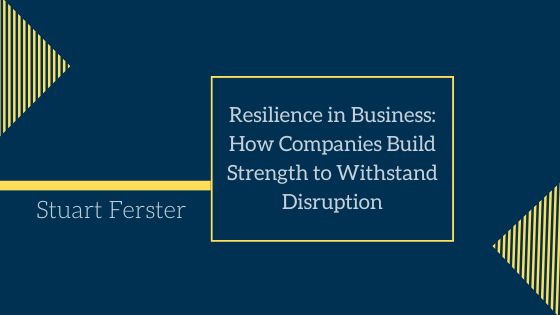Disruption has become a constant in the modern business environment. From economic downturns and global health crises to technological shifts and supply chain challenges, companies face unpredictable events that can threaten stability. While no business can avoid disruption entirely, those that cultivate resilience are better equipped to withstand shocks and emerge stronger. Business resilience is no longer just a defensive strategy—it is a vital component of long-term growth and sustainability.
Understanding Business Resilience
Business resilience is the ability of an organization to anticipate, prepare for, respond to, and adapt to change or crises. Unlike traditional risk management, which often focuses on avoiding specific threats, resilience emphasizes flexibility and recovery. It is about creating systems and cultures that can absorb disruption and continue operating effectively, even under pressure.
Resilient companies recognize that setbacks are inevitable but not insurmountable. By planning for uncertainty and building adaptable structures, they transform challenges into opportunities for innovation and renewal.
Key Elements of Resilience
Strong leadership is a cornerstone of resilience. Leaders who communicate clearly, act decisively, and provide reassurance help teams stay focused during difficult times. Transparent communication builds trust, while a clear vision guides employees through uncertainty.
Another essential element is operational flexibility. Companies that diversify their supply chains, invest in digital infrastructure, and maintain agile processes are better positioned to adjust when disruptions occur. For example, businesses that embraced remote work technologies were able to continue operations smoothly during global lockdowns.
Financial preparedness also plays a critical role. Maintaining healthy cash reserves, reducing debt, and planning for different financial scenarios allow companies to weather short-term losses without compromising long-term stability.
The Role of Culture and People
Resilience is not only about systems and strategies—it is also about people. A resilient workforce is adaptable, collaborative, and motivated to overcome challenges. Companies that invest in employee well-being, continuous learning, and skill development foster teams that can pivot quickly when needed.
Encouraging a culture of innovation also strengthens resilience. When employees feel empowered to propose new ideas and solutions, the organization can respond to disruption with creativity rather than fear. This cultural mindset transforms disruption into a catalyst for progress.
Learning from Disruption
Resilient companies treat disruptions as opportunities for growth and learning. After a crisis, they evaluate what worked, what failed, and how processes can improve. This reflection helps them prepare for future challenges with greater confidence and capability.
Some organizations even use disruptions as springboards for reinvention. For example, businesses that shifted to e-commerce during physical closures discovered new customer segments and revenue streams that continued long after the initial crisis.
Building Strength for the Future
Resilience is not built overnight. It requires ongoing investment in leadership, culture, systems, and financial stability. Companies that make resilience a priority are not only better prepared for crises but also more competitive in stable times.
In an unpredictable world, resilience is one of the most valuable assets a business can possess. By planning ahead, staying flexible, and empowering people, organizations can withstand disruption and transform uncertainty into long-term strength.

